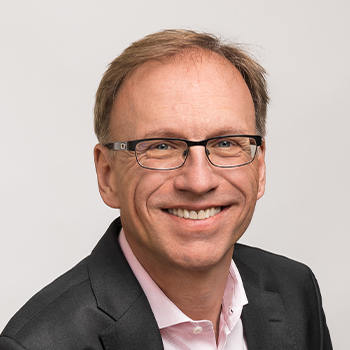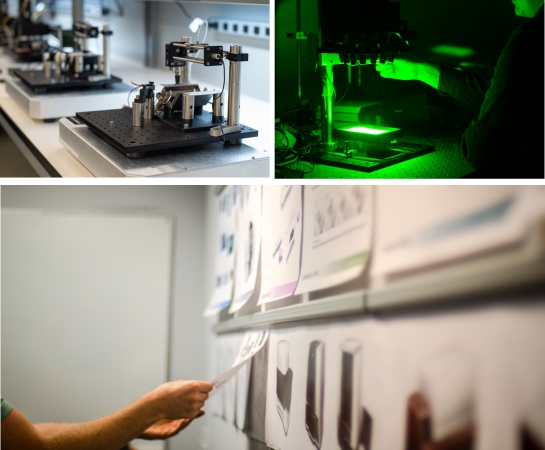Leadership Q&A with Senior Director of Tecan R&D
Tecan System’s San Jose R&D group has relocated to join Paramit in Morgan Hill, CA. Hear from Jochen Horn, Tecan’s Senior Director of R&D, about what the move means for his team and about the anticipated benefits that will be realized from having the design and manufacturing teams working in close proximity.
Tecan’s California based R&D group also has access to a 300+ person global product development team with extensive engineering talents that Paramit will be able to leverage to better serve their customer’s design and manufacturing needs.
With your recent move to Morgan Hill, what excites you about the future of the development group?
It is undoubtedly the people that excite me the most. We integrated two great groups from Paramit Product Development and Tecan Systems. Having complimentary skill sets, the two teams merged seamlessly forming a strong partnership with enhanced capabilities.
Secondly, our combined skills open the door to new healthcare hardware opportunities which aligns with Tecan’s vision, scaling healthcare innovation globally. Our engineering talent, while strongly suited for lab automated solutions, is also capable of designing point of care devices, analytical instruments, and other mechatronic intensive products.
What are the benefits of being located close to Paramit’s manufacturing site?
Manufacturing’s close proximity to R&D promotes frequent in-person collaboration which in turn helps ensure successful transfers to manufacturing. DfX support is critical to achieving yield and cost targets, and the Tecan R&D engineers have immediate access to Paramit’s engineering and supply chain resources, and vice versa. Our two teams also share a common vision which is full product realization and helping our customers achieve commercial success.
What type of OEM can benefit the most from the combined services of Tecan Systems R&D and Paramit manufacturing?
All OEM customers, startups or Tier 1 companies, benefit from our combined services. Many customers who have transferred a complex instrument to a remote manufacturing site have incurred delays and hard-to-measure costs such as travel expenses and excessive freight charges. Co-locating development and manufacturing provides a low-risk solution, and reducing risk is advantageous to all our customers.
Based on your experience managing multidisciplinary teams, what are some of the key factors that can help ensure a team operates smoothly and efficiently?
It’s important to bring cross functional teams together and create a common vision. Leaders must enable their team’s success by providing essential tools and infrastructure. And of course, talented people want to be empowered, and leaders must often take a back seat and allow teams to work through challenges on their own.
How close is the relationship between the design team and the customer? What can be done to nurture and strengthen this relationship?
It is crucial for the design team to have a close relationship with the customer in order to fully understand their needs and create a successful product. In many cases, we have to look to the future together and help our customers to build their product pipeline, to scale up, and to create their own roadmap.
Occasionally, our customer’s vision may change during the design and development process. For example, a startup may pivot in a different direction based on findings from their early customer or clinical feedback. That’s why it is paramount that the design team and customer work together as partners to overcome these challenges and understand the applications and design struggles. The teams work together to create a win-win situation, because in the end, we are only successful if our customer is successful.
When designing a new product, how much weight should be given to function versus style versus safety? What other factors are there that also must be considered?
Safety can never be a tradeoff. There is a rule in the design process that of the three main product development parameters, cost – schedule – performance, only two can tightly be controlled. One of the three needs to be somewhat more flexible. Of course, that does not mean that parameter can get out of control, but it will need to be more adaptable. Typically, performance and quality are non-negotiable, leaving room to weigh cost vs. schedule. Is time-to-market more important than cost? Or vice versa? As for style, given the constraints from the fundamental architecture and design envelope, there is a lot of room for a skilled industrial designer to provide attractive and functional style options.
Jochen joined Tecan in 2021. As an integral part of the global Tecan R&D organization, Jochen’s group provides dedicated product development support to the Paramit team. With 20 years of experience in the medical device and IVD space, Jochen has led various R&D groups bringing multiple complex integrated instruments from concept to manufacturing.
Prior to joining Tecan, Jochen led efforts in optical design, systems engineering, and product development at Carl Zeiss Meditec, Inc., with teams based in India and China. Later, Jochen worked on hematology platforms (IVD) for Abbott with responsibilities spanning across hardware engineering and reagents. Jochen earned his Ph.D. (Dr. rer. nat.) in Physics at the University of Cologne, Germany, followed by a postdoctoral fellowship at the University of California at Los Angeles.




